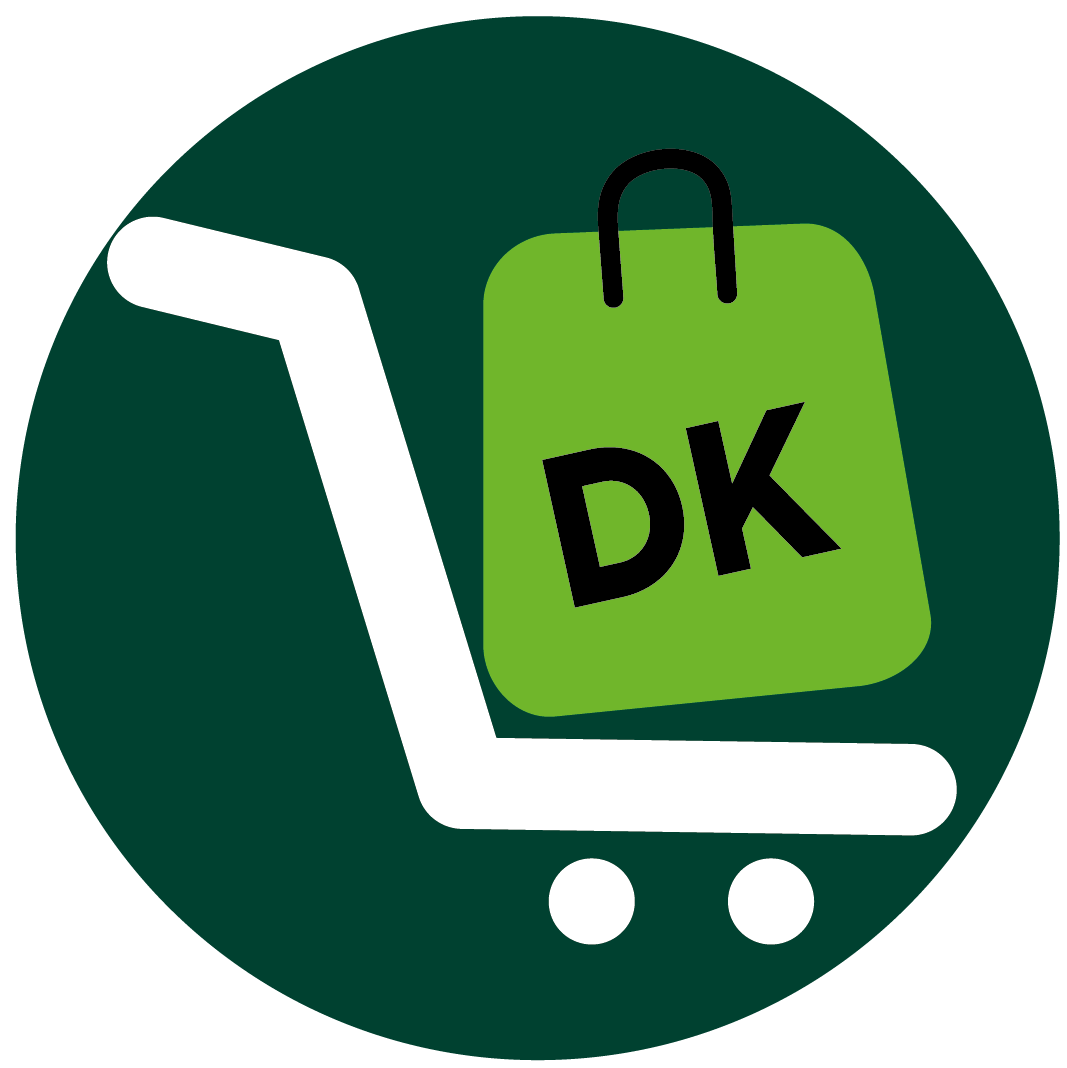Understanding and tracking the right metrics allows you to optimize your online store, improve customer experience, and increase sales. Here are seven essential e-commerce metrics you need to track for your online store.
1. Sales Conversion Rate
Tracking your Sales Conversion Rate is crucial because it directly reflects the effectiveness of your online store in turning visitors into paying customers. By monitoring this metric, you can identify bottlenecks in your sales funnel and optimize your website to enhance user experience, ultimately boosting your revenue. A high conversion rate means your marketing efforts are paying off, and your site is compelling enough to persuade visitors to make a purchase. This insight allows you to make data-driven decisions to improve your store’s performance and profitability.
Pros:
- Identifies how well your site converts visitors into customers.
- Helps in optimizing marketing strategies.
- Provides insights into user behavior.
Cons:
- Can be influenced by external factors like seasonality.
- Requires significant traffic for accurate measurement.
- May not account for repeat customers.
- Indicates the effectiveness of your sales funnel.
- Tracks the percentage of visitors who make a purchase.
- Measures the success of marketing campaigns.
>>> MORE : Best Dropshipping Products for Spring
2. Average Order Value (AOV)
Focusing on Average Order Value (AOV) can significantly impact your bottom line. By understanding how much customers spend on average per transaction, you can implement strategies like upselling and cross-selling to increase this value. A higher AOV means more revenue per customer, which can lead to greater profitability without necessarily increasing your customer base. This metric helps you identify opportunities to enhance your product offerings and pricing strategies, ensuring you maximize the revenue potential of each customer interaction.
Pros:
- Boosts revenue per transaction when higher.
- Helps in setting pricing strategies.
- Provides insights into customer spending habits.
Cons:
- Can be skewed by outliers or large one-time purchases.
- May not reflect the profitability of individual products.
- Requires consistent monitoring to identify trends.
- Measures the average amount spent per order.
- Tracks the effectiveness of upselling and cross-selling strategies.
- Indicates customer purchasing behavior.
3. Customer Lifetime Value
Customer Lifetime Value (CLV) is a powerful metric that helps you understand the long-term value of your customers. By calculating CLV, you can determine how much you can afford to spend on acquiring new customers while still maintaining profitability. This metric guides your marketing and retention strategies, ensuring you focus on high-value customers who contribute the most to your revenue. Understanding CLV allows you to make informed decisions about customer acquisition, retention, and overall business growth, leading to a more sustainable and profitable online store.
Pros:
- Guides decisions on customer acquisition and retention.
- Helps in budgeting for marketing and sales efforts.
- Provides insights into customer loyalty.
Cons:
- Requires accurate data and can be complex to calculate.
- May not account for changes in customer behavior over time.
- Needs regular updates to remain accurate.
- Estimates the total revenue from a customer over their lifetime.
- Calculates the long-term value of customer relationships.
- Tracks the effectiveness of retention strategies.
>>> PRO TIPS : Best Dropshipping Suppliers for Beginners
4. Customer Acquisition Cost
Monitoring your Customer Acquisition Cost (CAC) is essential for maintaining a healthy balance between spending and revenue. By knowing how much it costs to acquire a new customer, you can evaluate the efficiency of your marketing campaigns and adjust your strategies accordingly. Keeping CAC low while maintaining or increasing Customer Lifetime Value (CLV) is crucial for profitability. This metric helps you allocate your marketing budget more effectively, ensuring you get the best return on investment and attract high-quality customers to your online store.
Pros:
- Helps to understand marketing efficiency.
- Helps in budgeting and financial planning.
- Provides insights into the effectiveness of different marketing channels.
Cons:
- Hurt profitability, for High CAC if not managed well.
- Requires detailed tracking of marketing expenses.
- May not account for the quality of acquired customers.
- Calculates the cost to acquire a new customer.
- Tracks the efficiency of marketing and sales efforts.
- Measures the return on investment (ROI) of marketing campaigns.
5. Shopping Cart Abandonment Rate
Tracking the Shopping Cart Abandonment Rate is vital for identifying and addressing issues in your checkout process. A high abandonment rate can indicate problems such as a complicated checkout process, unexpected costs, or lack of payment options. By understanding why customers abandon their carts, you can make necessary improvements to reduce friction and increase conversions. This metric helps you optimize the user experience, ensuring more visitors complete their purchases and boosting your overall sales.
Pros
- Identifies issues in the checkout process.
- Helps in optimizing the user experience.
- Provides insights into customer behavior.
Cons
- Indicate significant barriers to purchase for high rates.
- Requires detailed analysis to identify specific issues.
- May not account for intentional browsing behavior.
- Tracks the percentage of abandoned shopping carts.
- Measures the effectiveness of the checkout process.
- Indicates potential barriers to purchase.
6. Returning Customer Rate
The Returning Customer Rate is a key indicator of customer loyalty and satisfaction. By tracking this metric, you can gauge how well your store retains customers and encourages repeat purchases. High returning customer rates suggest that your products and services meet or exceed customer expectations, leading to long-term relationships and steady revenue. This metric helps you focus on retention strategies, such as loyalty programs and personalized marketing, to keep customers coming back and increase their lifetime value.
Pros
- Suggests strong customer loyalty.
- Helps in predicting future revenue.
- Provides insights into customer satisfaction.
Cons
- Suggest issues for low rates with customer satisfaction.
- Requires consistent monitoring to identify trends.
- May not account for seasonal variations in customer behavior.
- Measures the percentage of repeat customers.
- Tracks customer loyalty and satisfaction.
- Indicates the effectiveness of retention strategies.
7. Bounce Rate
Monitoring your Bounce Rate is crucial for understanding how engaging and relevant your website content is to visitors. A high bounce rate signals that visitors are not finding what they are looking for or that your site is difficult to navigate. By analyzing this metric, you can identify areas for improvement, such as enhancing your content, improving site design, or optimizing page load times. Reducing your bounce rate ensures that more visitors stay on your site longer, explore your offerings, and ultimately convert into customers.
Pros:
- Highlights potential issues with site content or user experience.
- Helps in optimizing website design and content.
- Provides insights into user behavior.
Cons:
- High rates can be challenging to diagnose and fix.
- Requires detailed analysis to identify specific issues.
- May not account for intentional single-page visits.
- Shows the percentage of visitors leaving after one page.
- Tracks the effectiveness of landing pages.
- Indicates potential issues with site content or user experience.
>>>GET SMARTER : Best Electronic Dropshipping Suppliers
Overview of E-Commerce Metrics to Track for Your Online Store

Tracking ecommerce metrics is crucial for understanding and optimizing your online store’s performance. Key metrics such as Sales Conversion Rate, Average Order Value (AOV), Customer Lifetime Value (CLV), Customer Acquisition Cost (CAC), Shopping Cart Abandonment Rate, Returning Customer Rate, and Bounce Rate provide deep insights into various aspects of your business. These metrics help you evaluate how effectively your store converts visitors into customers, the average spending per transaction, and the loyalty of your customers.
How to Choose E-Commerce Metrics to Track for Your Online Store
To determine which online store eCommerce Metrics to use for monitoring:
- Define Your Business Goals: Start by clearly defining what you want to achieve with your online store. Is your focus on increasing sales, improving customer retention, or enhancing user experience? Your goals determine which metrics are most relevant.
- Identify Key Performance Indicators (KPIs): Select KPIs that align with your business goals. For example, metrics like Sales Conversion Rate and Average Order Value (AOV) are crucial if your goal is to increase sales. If customer retention is your focus, consider metrics like Customer Lifetime Value (CLV) and Returning Customer Rate.
- Consider Your Business Model: Different business models may require different metrics. For instance, a subscription-based model might prioritize metrics like Churn Rate and Customer Lifetime Value, while a retail model might focus more on Sales Conversion Rate and Average Order Value.
- Analyze Customer Behavior: Understanding your customers’ behavior can help you choose the right metrics. Use tools like Google Analytics to track how customers interact with your site, which pages they visit, and where they drop off. Metrics like Bounce Rate and Shopping Cart Abandonment Rate can provide insights into user experience and potential areas for improvement.
- Set SMART KPIs: Ensure your KPIs are Specific, Measurable, Achievable, Relevant, and Time-bound (SMART). This approach helps you set clear targets and measure progress effectively. For example, instead of a vague goal like “increase sales,” set a SMART KPI like “increase sales by 20% in the next quarter.”
- Use Analytics Tools: Leverage ecommerce analytics tools to track and measure your chosen metrics. Platforms like Google Analytics, Shopify, and BigCommerce offer comprehensive dashboards that can help you monitor performance and gain actionable insights.
- Regularly Review and Adjust: Regularly review your metrics to assess performance and make necessary adjustments. Business environments and customer behaviors change with time, so stay flexible and update your metrics as the need arises.
Pros and Cons of E-Commerce Metrics to Track for Your Online Store
Pros:
- Informs Decision-Making: Ecommerce metrics provide valuable data that helps you make informed decisions about marketing, sales, and customer service strategies.
- Tracks Performance: Metrics allow you to monitor the performance of your online store, identifying strengths and areas for improvement.
- Offers Customer Insights: Understanding metrics like Customer Lifetime Value (CLV) and Returning Customer Rate gives you insights into customer behavior and loyalty.
- Highlights Optimization Opportunities: Metrics such as Sales Conversion Rate and Shopping Cart Abandonment Rate highlight opportunities to optimize your website and checkout process.
- Guides Budget Allocation: By tracking Customer Acquisition Cost (CAC), you can allocate your marketing budget more effectively, ensuring a better return on investment.
- Provides Competitive Advantage: Regularly monitoring and analyzing metrics can give you a competitive edge by enabling you to respond quickly to market changes and customer needs.
- Helps Set Goals: Metrics help you set realistic and measurable goals, making it easier to track progress and achieve business objectives.
Cons:
- Data Overload: With so many metrics available, it can be overwhelming to decide which ones to focus on, potentially leading to analysis paralysis.
- Complexity: Some metrics, like Customer Lifetime Value (CLV), prove complex to calculate and require accurate data collection.
- Misinterpretation: Without proper understanding, you can misinterpret metrics, and this leads to incorrect conclusions and decisions.
- Resource Intensive: Tracking and analyzing metrics is time-consuming and requires specialized tools and expertise.
- External Influences: External factors such as seasonality, economic conditions, and market trends, influence metrics, and these may not always be within your control.
- Short-Term Focus: Focusing too much on short-term metrics leads to neglect of long-term strategies and goals.
- Data Quality: The accuracy of your metrics depends on the quality of your data. Inaccurate or incomplete data leads to misleading insights.
Pro Tips

Here are some pro tips:
- Define specific, measurable, achievable, relevant, and time-bound (SMART) goals for each metric to ensure you have a clear direction and can track progress effectively.
- Leverage tools like Google Analytics, Shopify, or other ecommerce platforms to track and analyze your metrics. These tools provide comprehensive dashboards and reports that make it easier to monitor performance.
- Consistently review your metrics to identify trends, patterns, and areas for improvement. Regular analysis helps you stay on top of changes and make timely adjustments.
- Break down your metrics by different segments such as customer demographics, traffic sources, and device types. This detailed view helps you understand specific behaviors and tailor your strategies accordingly.
- Do consistent A/B Testing. Continuously test different elements of your website, marketing campaigns, and checkout process. A/B testing helps you determine what works best and optimize for higher performance.
- Ensure your website is user-friendly, fast-loading, and mobile-optimized. A positive user experience can significantly impact metrics like bounce rate, conversion rate, and customer satisfaction.
- Use customer data to personalize your marketing messages and product recommendations. Personalization can improve engagement, conversion rates, and customer loyalty.
- Keep an eye on your competitors’ performance and strategies. Understanding their strengths and weaknesses can provide valuable insights and help you stay competitive.
- Collect and act on customer feedback regularly to improve your products, services, and overall customer experience. Satisfied customers are more likely to return and recommend your store.
- Allocate your marketing budget to the most effective channels based on your metrics. Focus on channels that deliver the best return on investment and adjust your strategy as the need arises.
Recap
Tracking the right ecommerce metrics is essential for the success of your online store. These metrics provide valuable insights into various aspects of your business, from customer behavior to financial performance.
Key metrics such as Sales Conversion Rate, Average Order Value (AOV), Customer Lifetime Value (CLV), Customer Acquisition Cost (CAC), Shopping Cart Abandonment Rate, Returning Customer Rate, and Bounce Rate help you understand how effectively your store converts visitors into customers, how much they spend, and how loyal they are. Monitoring these metrics helps you identify areas for improvement, optimize your marketing strategies, and enhance the overall customer experience.














